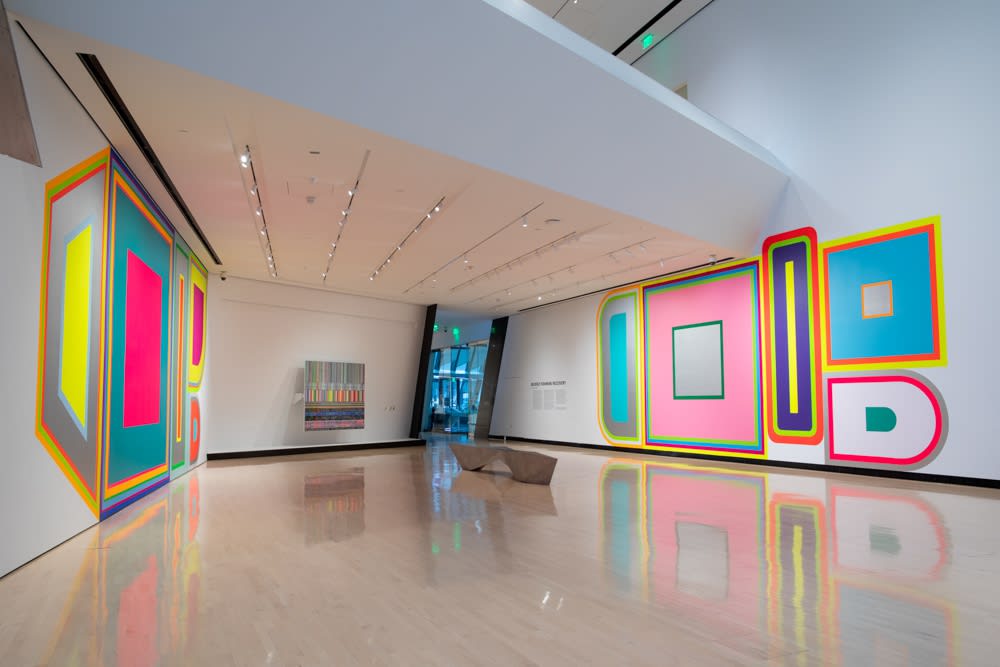
This week marked the closing of Beverly Fishman’s RECOVERY at the Eli and Edythe Broad Art Museum. This exhibition, held in the Julie and Edward Minskoff galleries, featured two large-scale murals commissioned in celebration of the museum’s 10 year anniversary.
The electricity of Fishman’s floor-to-ceiling murals created an alternate universe. Their ordered geometry and artificial hues transported the viewer to an unfamiliar realm brimming in technicolor. Any semblance of control was gently removed in the presence of Fishman’s works. Alternating borders in varying widths and colors hugged shapes of baby pink, aquamarine, and glimmering silver. These unnaturally sterile forms created the illusion of volume, further muting notions of reality. The power that emanated from Fishman’s murals mirrored that of the building they adorned. A sense of calm was imparted upon a viewer absorbed in a strange world of alarming attraction. 
Although presented as a solo exhibition, RECOVERY was truly a collaboration between Fishman and the late Zaha Hadid, the British-Iraqi architect revered for her sleek futuristic structures, who designed The Eli and Edythe Broad Art Museum.
There is a dominating serenity to the building’s form. Patterned with blocks of repeating narrow panels, each segment of the building’s steel framework intersects at seemingly-impossible angles. The balance of the architecture appears removed from reality. Alongside this otherworldly precarity, Hadid managed to find a way to remind the viewer to remain calm. The transcendental qualities that originate within the building’s Suprematist influences take precedence over the fear-inducing doubt caused by the outlandish framework. Hadid’s design forces the inhabitants of the building to recognize the unrecognizable.
It was via this harmonious communication between Hadid and Fishman that the exhibition title assumed its wholly-realized form. The unprecedented chaos of today’s world warrants a deepened understanding of mindfulness. RECOVERY provided an opportunity for finding comfort in the unfamiliar. With their commandeering presences, Fishman’s murals and Hadid’s architecture forced us to let go of our preconceived conceptions of reality. We were given the space to step back, breath, and take stock of all that stood before us.
